A parakeet's tale
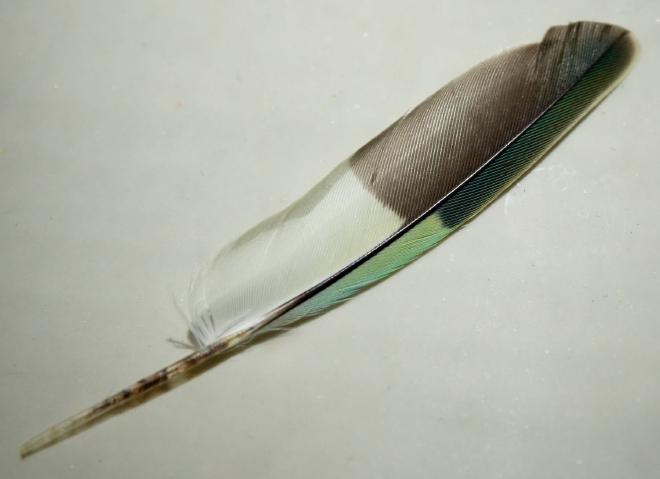
People often say that their pets chose them, rather than the other way around. It’s literally true that Lola chose me.
We were in the pet store wanting to get a second budgerigar, now that our first was tame and settled. They had a cage with some hand-raised budgies in. They opened the cage door, and I put my hand out, palm up, just inside the cage. Most of the birds edged away, but one small green budgie walked right over without hesitating, and jumped up onto my hand.
“We’ll take this one.”
“Are you sure? That one’s a bit mean. She bit someone.”
She looked like the runt of the litter too, but we said we were sure. So it was that a small scruffy female bird came home to live with us.
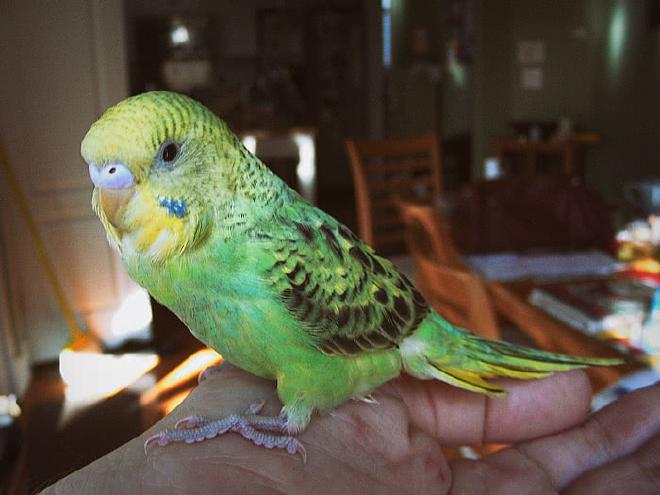
For the first four weeks she was in quarantine — standard procedure with any new bird, in case it carries some sort of contagious illness. We kept her in a separate cage in the spare room upstairs.
I have a philosophy of pets. I believe that the most interesting and meaningful relationships are negotiated ones, where both parties have freedom of choice in their decisions. I’ve read that this is particularly important for parrots — they need to feel that they have agency and can make their own choices.
So in those first few weeks, whenever I had some time free I’d go up and sit with the new bird. I’d take a laptop or a tablet, and get on with human things. I’d leave the cage door open, and leave it up to the bird whether she stayed in the cage or not.
Needless to say, this is not how pet birds are used to being treated. Years later when Bruce joined us, he found it quite hard to understand. He’d walk out of the cage and stand on the lowered door and look around — then he’d walk back in and look around again. He’d repeat this a few times before finally climbing up the outside of the cage.
Lola, in contrast, seemed to have no problem with the idea that it was up to her whether she was to be in or out of the cage. It wasn’t long before she was wandering around the bed, climbing up my leg, and generally exploring her new world. Her flight feathers grew back, she learned to fly around the house safely and go where she wanted to be, and she was introduced to our other parakeet.
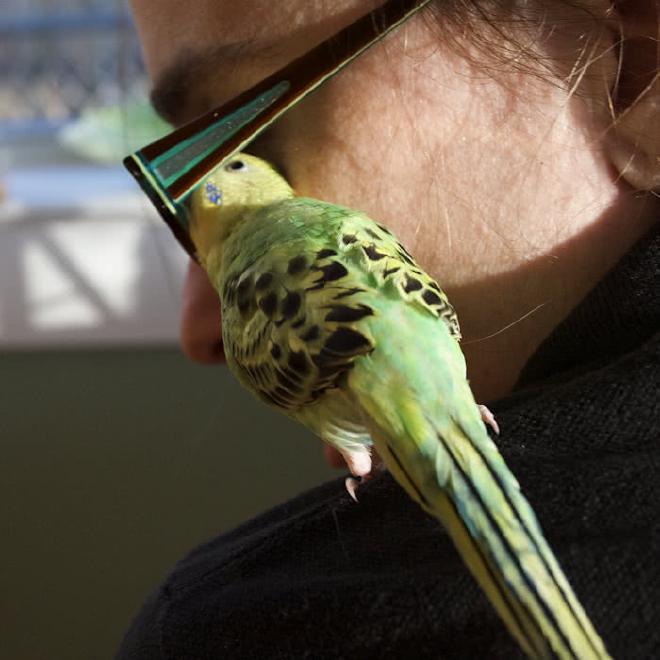
Interacting with Lola, we quickly worked out the rules: if you tried to touch her, pick her up or make her do something, you’d get the beak. If you let her touch you, she’d nuzzle you, preen your hair and eyebrows, and make the quiet burbling noises budgies use to show affection. It turns out that birds are really affectionate pets, which was a complete surprise to me.
As a young bird, Lola seemed to eat all the time. She was full of energy, always climbing the curtains or hanging from the window frames. When spring arrived she developed an urge to hump my head, but fortunately I managed to persuade her to transfer her more sexual urges to the curtains. She never showed any interest in the male budgies, and never laid any eggs. She was always a scruffy bird, with feathers out of place, but she loved to bathe.
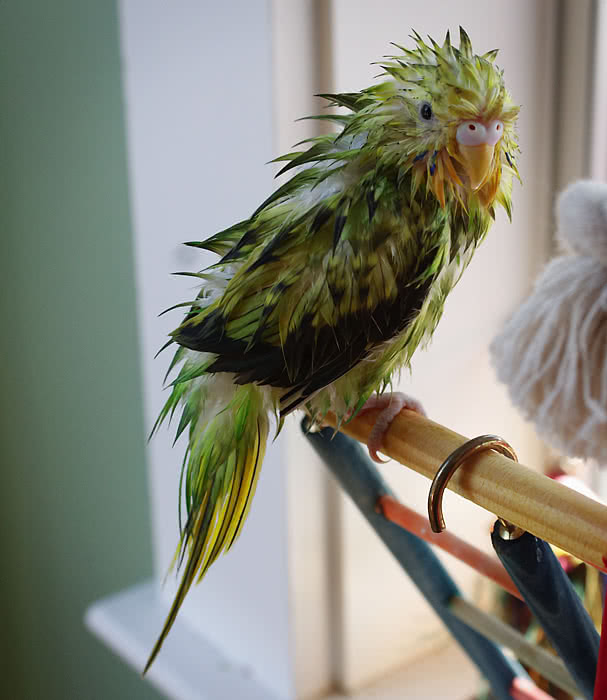
As she got older, she got into the habit of sitting on my shoulder while I worked. During the colder months she would cuddle against the side of my neck. And yes, she’d poop every 15 minutes or so, but I kept a supply of old shirts and t-shirts to wear. She’d take breaks to go snack, or to explore my desk, or to crawl into my shirt pocket. Often she’d take an afternoon nap on my shoulder. We lived together, and we got older together. Then last summer, she got ill.
It started off with sudden vomiting of food, and sitting fluffed up and motionless on the window ledge. I immediately weighed her, and found that she had lost 2-4 grams — which is a lot, if you’re a 32 gram bird. I called the vet and set up appointment for the next day. Samples were taken, and it turned out she had an infection. Antibiotics were suggested, but because of the severity of the infection and the fact that we were going on vacation they would have to be injected antibiotics.
I had never had to give an injection to a pet before. I’m sure that injecting drugs into a dog or a cat is no fun, but injections for a bird have some additional problems. Birds are small and delicate, and they need to be able to move their ribcages in order to breathe. With a parakeet, you have to learn to somehow hold the bird still in one hand without restricting its ribcage, keeping one finger above its head to prevent it from wriggling upwards and escaping. With the other hand, you hold the syringe and inject just to the left or right of the breastbone. While you do this, the parakeet screams plaintively, and tries to grab the syringe with its dexterous feet and push it away. It might also bite hard enough to draw blood, if your fingers get close enough to its beak. If you let go and it escapes, well, good luck catching it inside an hour or two.
Not only had I never given injections to a pet, I’ve never done it to a human either. Generally when I’m getting my shots or having blood drawn I prefer to look away. I’m not scared of injections, but I’d really rather not have to pay attention to them. So all told, there were few things I wanted to do less than inject a budgie with antibiotics twice a day for just over a week. There was no real choice, though — there was no way I was going to let Lola die.
The drugs worked. She got better almost immediately. I expected her to hate me for sticking her with needles, but in fact she became even more affectionate. She began cuddling up to me as I watched TV or played video games, as well as when I was in the office. Is it possible she understood on some level what was going on? Clearly she at least was able to differentiate between the human who regrettably had to take her from the cage and inject her, and the human who continued to interact with her normally.
By the time we went on vacation, she seemed perfectly fine. When we got back, she still seemed fine. A couple of days after that, though, she was vomiting again, and bloated up. It was a holiday weekend, so we went to the emergency vet and got some more antibiotics — orally administered, this time.
Giving oral medication to a parakeet isn’t a whole lot better than injections. You have the added problem of trying to get liquid into a beak that’s kept stubbornly closed as the head shakes left and right to try to dodge. I developed a technique of offering a sacrificial fingertip in the hope she’d bite it, so I could squirt in the medicine while she was doing so.
The Tuesday after the weekend we got to see our regular vet. He suggested a PCR test. The results would take about a week. During that week Lola got a little better, but the improvement was nowhere near as good as the first time.
Finally, the results came in: megabacteriosis.
The name is misleading. When the illness was first identified by budgie breeders around 35 years ago, the organism responsible was believed to be a large rod-shaped bacterium, hence the name. We now know that the condition is caused by yeast — an overgrowth of the yeast which naturally occurs in the bird’s gastric system, hence the new term Avian Gastric Yeast or AGY.
So the bacterial infection was a secondary problem. The real issue needed a different treatment — a rather severe antifungal drug called Amphoteracin-B. Unfortunately, the vet didn’t carry it, and said I’d probably have to order some from a veterinary pharmacy in Houston. I did so, but later that day I got a voicemail from the pharmacy: They were out of Amphoteracin-B, and were ordering some, but it would take a couple of days for it to arrive.
I wasn’t sure Lola was going to live that long. When budgies get sick they can lose weight and die very quickly, and Lola was already down to 26 grams. There was only one thing to do: I found a list of all the compounding pharmacies in Austin, and we started calling them, one by one, asking if they had the drug.
After a few calls we found out that the unimaginatively named Austin Compounding Pharmacy had the drug. I asked if they could mix some up for a bird, and they said they could. I headed there immediately.
The Amphoteracin was nasty stuff. It was in a greasy suspension, and got on Lola’s face and head feathers as she struggled. Combine this with her vomiting, and she was looking a mess, losing feathers and clearly very sick. The next day her weight had dropped to 24 grams, and she couldn’t fly. We decided it was probably over, and expected to take her to be put down on Saturday.
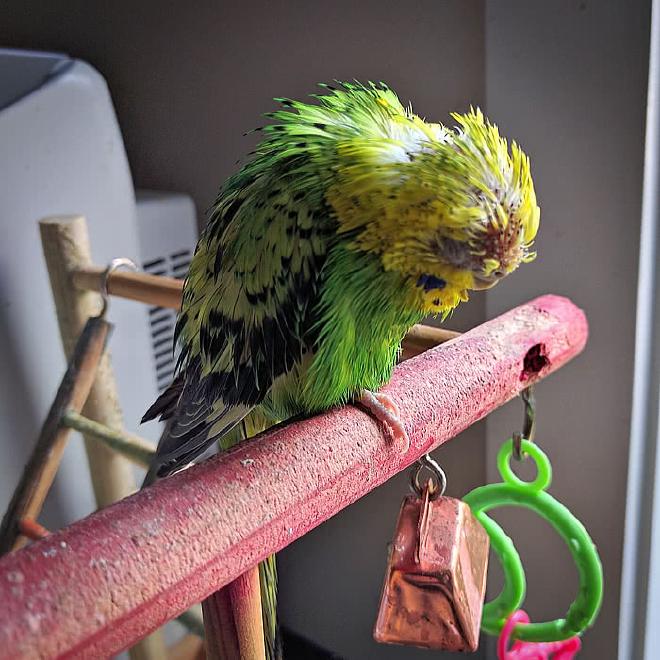
Saturday morning, for want of anything better to do, I dosed her and weighed her — and by some miracle, she was 26 grams. We decided to give it another day or two — and on Sunday she was up to 28 grams.
Over the next week, she gained weight steadily, until she was back to her normal 32-34g. The “official” medicine arrived by mail, and I switched to that. It was more potent, and also banana flavored, so easier to get into her beak.
It took Lola weeks to recover the ability to fly, though — her muscles were weak, and her chest was probably still sore from the injections. Regrowing her missing feathers took longer still. Nevertheless, eventually she was healthy and happy again.
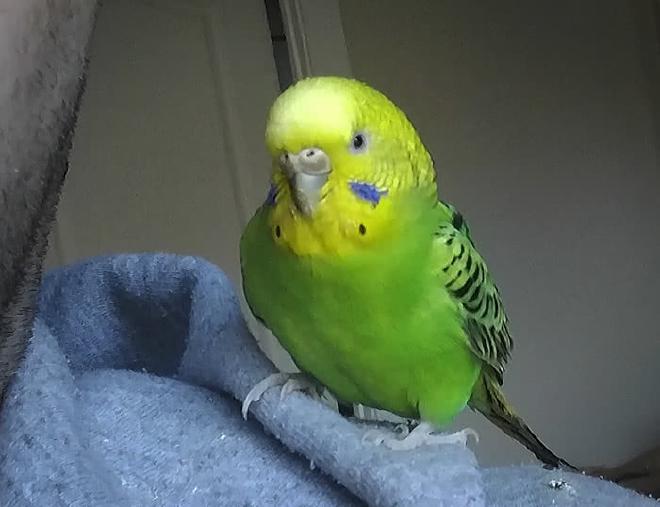
After a couple of months, though, I noticed her fluffed up again. There’s no cure for AGY, and it generally recurs at intervals until the bird dies from the illness itself or from complications associated with it. Given the unpleasantness of the Amphoteracin, I wasn’t willing to put her through that repeatedly, but I’d done some research and found another option: some parakeet breeders have had success treating their birds with sodium benzoate. It’s a cheap food preservative and antifungal which is considered safe for humans, and can be dissolved into the bird’s drinking water. I ordered a bag of human-grade sodium benzoate from Amazon. I dissolved the appropriate amount into the birds’ water, and before long Lola was active again.
So it went for a few more months. I’d watch for signs of sickness, mix up a liter of sodium benzoate water, and use it until it was gone, at which point Lola would generally be back to normal.
We were delaying the inevitable, and we knew it. At this point Lola was over 8 years old, which is pretty old for a budgerigar, and the near-death experience had clearly taken a lot out of her. She mostly sat and snuggled us, or sat on the windowsills enjoying the warmth of the sun.
Eventually, in early May, the sodium benzoate didn’t do the job. I ordered a refill of Amphoteracin-B, since it had been a good 9 months since the last dosing, but that didn’t help much either. Before long Lola’s weight started dropping, she was vomiting, and she lost interest in food — she’d mostly just sit and look at it. It was time.
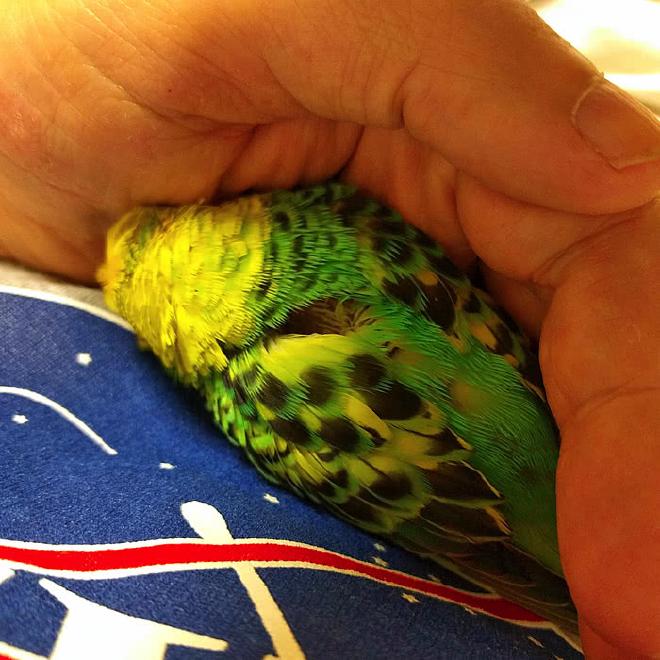
We took her to the vet’s office. We sat with her and said goodbye. She knew she was at the vet, but she didn’t try to escape, or even to fly — she just nestled in my hand. The vet gave her a sedative, and I talked to her and gently stroked her head feathers as she went to sleep. She’s buried outside our house, under her favorite window spot where she used to sit in the morning sun.
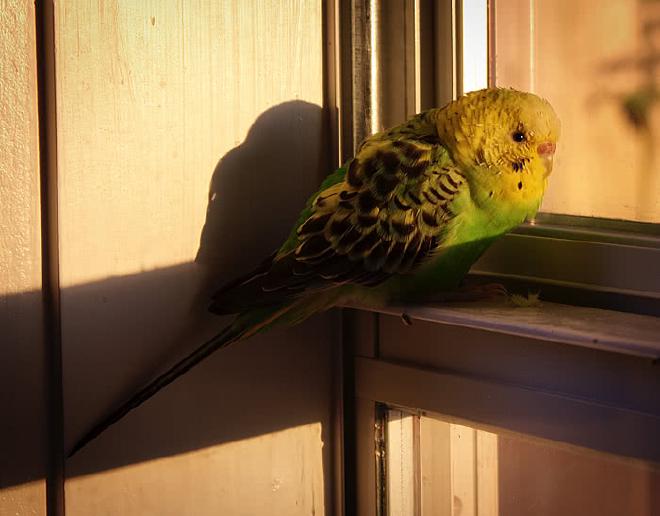
Yes, she was only a small bird, but she was a smart one, and an affectionate one. She kept me company while I worked from home, and I loved her dearly.